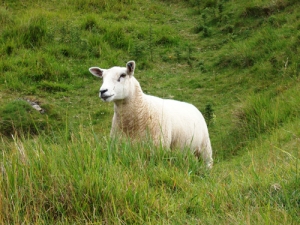Move over ham, here comes lamb
It’s official, lamb will take centre stage on Kiwi Christmas tables this year.
 The North Island auction received mixed support with the stronger NZ dollar having a limited impact in some areas.
The North Island auction received mixed support with the stronger NZ dollar having a limited impact in some areas.
New Zealand Wool Services International's chief executive John Dawson says the North Island auction received mixed support with the stronger NZ dollar having a limited impact in some areas.
Of the 6,500 bales on offer 97.5% sold.
The weighted indicator for the main trading currencies was up 1.35% compared to the last sale on 19th November, accounting for a corresponding local market reduction in some sectors.
Dawson advises that the finer end of the Fine Crossbred Fleece were up to 1.5% dearer with the stronger end buyer's favour.
Fine Crossbred Shears 3 to 5 and 3 to 4 inches were firm to 2.5% cheaper with the shorter lengths firm to 2% dearer.
Coarse Crossbred Full Fleece were 1.5% cheaper with Coarse Shears firm to 2% dearer.
Long Oddments remained firm with shorter oddments 3 to 7% cheaper.
Lambs Fleece were nominally unchanged.
Well spread competition with China and Australasia principals supported by Western Europe, Middle East, India and the United Kingdom.
Next sale on 3 December will comprise of approximately 5,000 bales from the South Island with the North Island sale cancelled due to weather affecting shearing.
Arable growers worried that some weeds in their crops may have developed herbicide resistance can now get the suspected plants tested for free.
Fruit growers and exporters are worried following the discovery of a male Queensland fruit fly in Auckland this week.
Dairy prices have jumped in the overnight Global Dairy Trade (GDT) auction, breaking a five-month negative streak.
Alliance Group chief executive Willie Wiese is leaving the company after three years in the role.
A booklet produced in 2025 by the Rotoiti 15 trust, Department of Conservation and Scion – now part of the Bioeconomy Science Institute – aims to help people identify insect pests and diseases.
A Taranaki farmer and livestock agent who illegally swapped NAIT tags from cows infected with a bovine disease in an attempt to sell the cows has been fined $15,000.